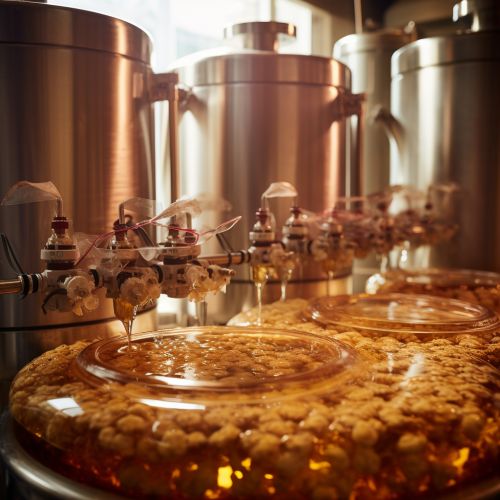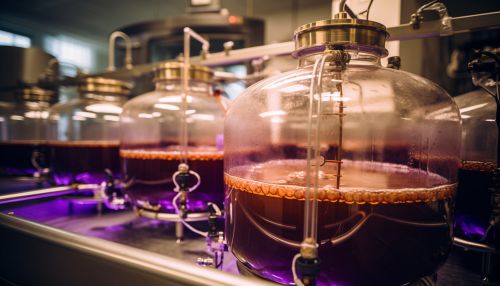The Role of Microbes in Fermentation and Food Production
Introduction
Microbes, or microorganisms, play a crucial role in the process of fermentation and the broader scope of food production. These microscopic organisms, which include bacteria, yeasts, and molds, are responsible for the transformation of raw ingredients into a variety of foods and beverages consumed worldwide. This article delves into the intricate relationship between microbes and fermentation, exploring the science behind the process, the types of microbes involved, and their impact on food production.
Microbes and Fermentation
Fermentation is a metabolic process that converts sugar to acids, gases, or alcohol using yeast and bacteria. It occurs in yeast and bacteria, and also in oxygen-starved muscle cells, as in the case of lactic acid fermentation. The science behind fermentation is complex, involving a series of biochemical reactions that are facilitated by the enzymes produced by microbes.


Types of Microbes Involved
There are several types of microbes that contribute to the fermentation process. These include:
- Saccharomyces cerevisiae, a species of yeast that is commonly used in baking and brewing.
- Lactobacilli, a type of bacteria that is used in the production of yogurt, cheese, sauerkraut, pickles, and other fermented foods.
- Acetobacter, a genus of bacteria that produces acetic acid as a byproduct of fermentation. It is used in the production of vinegar.
Microbes in Food Production
Microbes play a vital role in food production, not only through fermentation but also through other processes such as ripening and preservation. The use of microbes in food production dates back to ancient times, with evidence of fermented foods found in early human settlements.
Fermented Foods
Fermented foods are foods that have been through a process of lactofermentation in which natural bacteria feed on the sugar and starch in the food creating lactic acid. This process preserves the food, and creates beneficial enzymes, b-vitamins, Omega-3 fatty acids, and various strains of probiotics. Notable examples of fermented foods include yogurt, sauerkraut, kimchi, and sourdough bread.
Ripening
In the context of food production, ripening refers to any process in which a food product matures or ages. This process is often facilitated by microbes. For example, the ripening of cheese involves the action of various bacteria and molds that contribute to its flavor, texture, and aroma.
Preservation
Microbes are also used in food preservation. The process of fermentation, for example, can help to preserve food by producing alcohol, lactic acid, and acetic acid, all of which have preservative properties. This not only extends the shelf life of the food, but also enhances its nutritional content and flavor.
Conclusion
The role of microbes in fermentation and food production is vast and complex. These microscopic organisms are integral to the production of a wide variety of foods and beverages, contributing to their flavor, texture, nutritional content, and shelf life. As research continues to uncover new insights into the world of microbes, their importance in food production is likely to become even more apparent.
